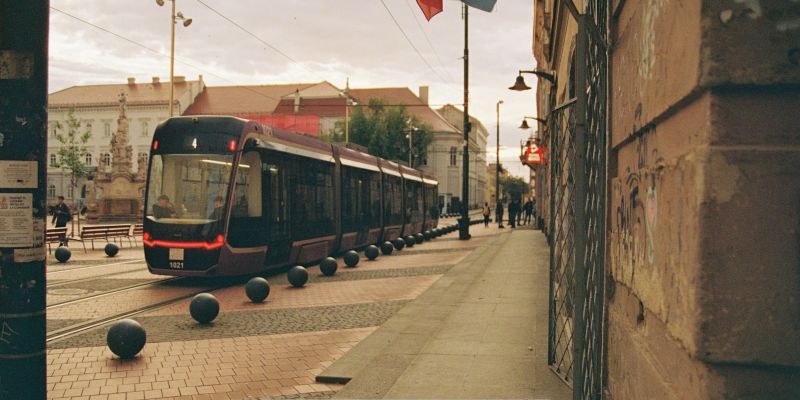European train travel offers a unique and enriching way to explore the continent, allowing travelers to experience diverse cultures, stunning landscapes, and historic cities all in one journey. With an extensive network of railways connecting major cities and remote towns alike, trains provide a convenient and efficient mode of transportation. The charm of train travel lies not only in the destinations but also in the journey itself, where passengers can relax and enjoy the scenic views that unfold outside their windows.
From the rolling hills of Tuscany to the fjords of Norway, the train offers a front-row seat to Europe’s breathtaking beauty. Moreover, train travel in Europe is often more sustainable than other forms of transportation, making it an appealing choice for environmentally conscious travelers. Many European countries have invested heavily in their rail infrastructure, resulting in modern trains that are both comfortable and punctual.
This commitment to rail travel has made it a popular option for both locals and tourists, fostering a sense of community among passengers who share the experience of traversing the continent by rail. As travelers embark on their European adventures, they find that the train is not just a means to an end but an integral part of the journey itself.
Key Takeaways
- European train travel offers a convenient and scenic way to explore the continent.
- When planning your itinerary, consider the time of year, popular destinations, and the duration of your trip.
- Choose the right rail pass based on the countries you plan to visit and the length of your journey.
- Pack light and consider bringing a small lock for your luggage when traveling on trains.
- Familiarize yourself with train stations and transfer procedures to make your journey smoother.
Planning Your Itinerary: Where to Go and When
Exploring Iconic Cities and Hidden Gems
Popular routes often include iconic cities such as Paris, Rome, Berlin, and Barcelona, but travelers should also explore lesser-known gems like Porto, Ghent, or Ljubljana. By mixing well-trodden paths with hidden treasures, travelers can create a more enriching experience that showcases the diversity of European culture.
Timing is Everything
Timing is equally crucial when planning a train itinerary. The peak tourist season typically runs from late spring to early fall, which can lead to crowded trains and higher prices. However, traveling during the shoulder seasons—spring and autumn—can provide a more relaxed experience with fewer crowds and more favorable weather conditions.
Maximizing Your European Experience
Additionally, certain events or festivals may influence travel plans; for instance, attending Oktoberfest in Munich or the Christmas markets in Vienna can enhance the overall experience. By carefully considering both destinations and timing, travelers can craft an itinerary that maximizes their enjoyment of Europe’s rich offerings.
Choosing the Right Rail Pass for Your Trip
Selecting the appropriate rail pass is a critical step in ensuring a smooth and cost-effective train travel experience in Europe. Various options are available, catering to different travel styles and itineraries. The Eurail Pass is one of the most popular choices for non-European residents, allowing unlimited travel across multiple countries within a specified time frame.
This flexibility enables travelers to hop on and off trains at their leisure, making it ideal for those who wish to explore various destinations without being tied to a strict schedule. For those who plan to focus on a specific country or region, national rail passes may be more suitable. Countries like France, Italy, and Spain offer their own rail passes that provide unlimited travel within their borders.
Additionally, some passes include discounts on local attractions or accommodations, adding further value to the purchase. It is essential for travelers to assess their planned routes and frequency of travel before making a decision on which pass to buy. By doing so, they can ensure they are getting the best deal while maximizing their travel experience.
Packing Tips for Train Travel in Europe
| Item | Packing Tip |
|---|---|
| Clothing | Pack versatile and lightweight clothing for layering. |
| Footwear | Bring comfortable walking shoes for exploring cities. |
| Travel Documents | Keep your passport, tickets, and travel insurance in a secure and easily accessible place. |
| Electronics | Bring a universal adapter and portable charger for your devices. |
| Toiletries | Use travel-sized containers and pack essentials only. |
| Backpack | Carry a lightweight and secure backpack for day trips and sightseeing. |
Packing efficiently for train travel in Europe can significantly enhance the overall experience. Given that space is often limited on trains, travelers should aim to pack light while ensuring they have all necessary items for comfort and convenience. A good rule of thumb is to bring only what can be easily carried; this typically means one medium-sized suitcase or backpack along with a smaller daypack for essentials.
This approach not only makes navigating train stations easier but also allows for greater mobility when exploring new destinations. In addition to clothing suitable for varying weather conditions, travelers should consider packing items that will enhance their comfort during long journeys. A lightweight blanket or travel pillow can make a significant difference when trying to rest on a train.
Snacks and a reusable water bottle are also wise additions; while many trains offer dining services, having personal snacks on hand can save time and money. Furthermore, travelers should not forget chargers for electronic devices and any necessary travel documents, ensuring they are well-prepared for their adventures ahead.
Navigating Train Stations and Transfers
Navigating train stations in Europe can initially seem daunting due to their size and complexity; however, with a little preparation, travelers can manage transfers with ease. Most major train stations are well-signposted in multiple languages, making it easier for non-native speakers to find their way around. Familiarizing oneself with the layout of the station before arrival can save time and reduce stress during transfers.
Many stations also offer information desks where staff can assist with directions or answer questions. When it comes to transfers between trains, timing is crucial. Travelers should always check their tickets for platform information and departure times well in advance.
It is advisable to arrive at the station at least 30 minutes before departure to allow ample time for any unexpected delays or complications. Additionally, keeping an eye on electronic boards displaying real-time updates can help ensure that travelers are aware of any changes to their train schedules. By staying organized and informed, passengers can navigate even the busiest stations with confidence.
Must-See Destinations: Highlighting the Best Stops
Discover the Magic of Paris
Paris is a quintessential stop for many travelers, boasting iconic landmarks like the Eiffel Tower and the Louvre Museum, which attract millions of visitors every year. The city’s vibrant neighborhoods, world-class cuisine, and rich history make it an essential part of any European itinerary.
Uncover the Renaissance in Florence
Florence, often regarded as the birthplace of the Renaissance, is another remarkable destination. Travelers can marvel at masterpieces by Michelangelo and Botticelli while strolling through its historic streets. The picturesque Tuscan countryside surrounding Florence also invites exploration, with charming villages like San Gimignano just a short train ride away.
A Rich Tapestry of European Culture
Each destination offers its own distinct experiences that contribute to the rich tapestry of European culture, making every stop a unique and unforgettable experience.
Dining and Snacking on European Trains
Dining on European trains can be an enjoyable experience that adds another layer to the journey. Many long-distance trains feature dining cars where passengers can savor regional cuisine while enjoying scenic views from their seats. These meals often highlight local ingredients and culinary traditions, providing travelers with a taste of the culture they are passing through.
For those who prefer more flexibility or are traveling on shorter routes, packing snacks is a practical option. Travelers can visit local markets or bakeries before boarding their trains to gather delicious treats such as pastries, cheeses, or cured meats. Having these snacks on hand not only satisfies hunger but also allows passengers to indulge in local flavors while on the move.
Whether dining in a restaurant car or enjoying homemade snacks, food becomes an integral part of the train travel experience.
Making the Most of Your Time Off the Train: Day Trips and Excursions
One of the advantages of train travel in Europe is the ease with which travelers can embark on day trips from major cities. Many iconic destinations are just a short train ride away, allowing visitors to explore more than one location during their travels. For instance, from Barcelona, one can easily reach Montserrat—a stunning mountain range known for its monastery—while those in Vienna can take a quick trip to the picturesque town of Salzburg.
Planning day trips requires some forethought; travelers should consider train schedules and how much time they want to spend at each destination. It is advisable to research local attractions ahead of time to maximize enjoyment during these excursions. By taking advantage of nearby locations, travelers can enrich their European experience and create lasting memories beyond their primary destinations.
Overnight Train Travel: Tips for Sleeping on the Rails
Overnight train travel presents a unique opportunity for adventurers looking to maximize their time in Europe while minimizing accommodation costs. However, sleeping on a train can be challenging if one is unprepared. To ensure a restful night’s sleep, travelers should consider booking a sleeper cabin or couchette for added comfort and privacy.
These options provide beds rather than seats, allowing passengers to lie down fully during their journey. Creating a comfortable sleeping environment is also essential; bringing along items such as earplugs or an eye mask can help block out noise and light from fellow passengers or station stops. Additionally, wearing comfortable clothing and having a light blanket or shawl can make it easier to relax during overnight journeys.
By taking these steps, travelers can arrive at their next destination refreshed and ready for exploration.
Safety and Security Considerations for Train Travel in Europe
While train travel in Europe is generally safe, it is important for travelers to remain vigilant about safety and security throughout their journeys. Keeping personal belongings secure is paramount; using locks on luggage and keeping valuables close at hand can help prevent theft or loss during transit. Many trains also offer luggage racks where bags can be stored safely while passengers are seated.
Awareness of surroundings is equally important when navigating busy train stations or boarding trains. Travelers should be cautious when approached by strangers offering unsolicited assistance or trying to sell items aggressively. It is advisable to trust one’s instincts; if something feels off or uncomfortable, it is best to move away from the situation or seek help from station staff if needed.
By staying alert and taking precautions, travelers can enjoy their journeys with peace of mind.
Making the Most of Your European Train Travel Experience: Final Tips and Recommendations
To truly make the most of a European train travel experience, embracing spontaneity alongside careful planning can lead to unforgettable adventures. While having an itinerary is beneficial, leaving room for impromptu stops or changes in plans allows travelers to discover hidden gems along their routes. Engaging with locals or fellow passengers can also provide valuable insights into lesser-known attractions or dining options.
Additionally, taking time to appreciate the journey itself is essential; rather than viewing train rides solely as transportation between destinations, passengers should relish the opportunity to observe changing landscapes and enjoy moments of reflection during their travels. By combining thoughtful planning with an open mind and heart, travelers can create lasting memories that will stay with them long after they return home from their European adventures by rail.
FAQs
What are the benefits of train travel in Europe?
Train travel in Europe offers several benefits, including scenic views, comfortable seating, the ability to avoid traffic and parking hassles, and the opportunity to easily travel between different countries and cities.
What are some popular train routes in Europe?
Some popular train routes in Europe include the Eurostar between London and Paris, the Thalys between Paris, Brussels, Amsterdam, and Cologne, and the TGV between major cities in France.
How can I plan a train travel itinerary in Europe?
When planning a train travel itinerary in Europe, consider the cities and countries you want to visit, the duration of your trip, and any specific attractions or landmarks you want to see. Research train schedules and ticket prices to create a feasible itinerary.
What are some tips for traveling by train in Europe?
Some tips for traveling by train in Europe include booking tickets in advance to secure the best prices, arriving at the station early to avoid rushing, and keeping an eye on your belongings while on board.
What are the different classes of train travel in Europe?
Train travel in Europe typically offers different classes, such as first class and second class. First class often provides more spacious seating and additional amenities, while second class is a more budget-friendly option.









